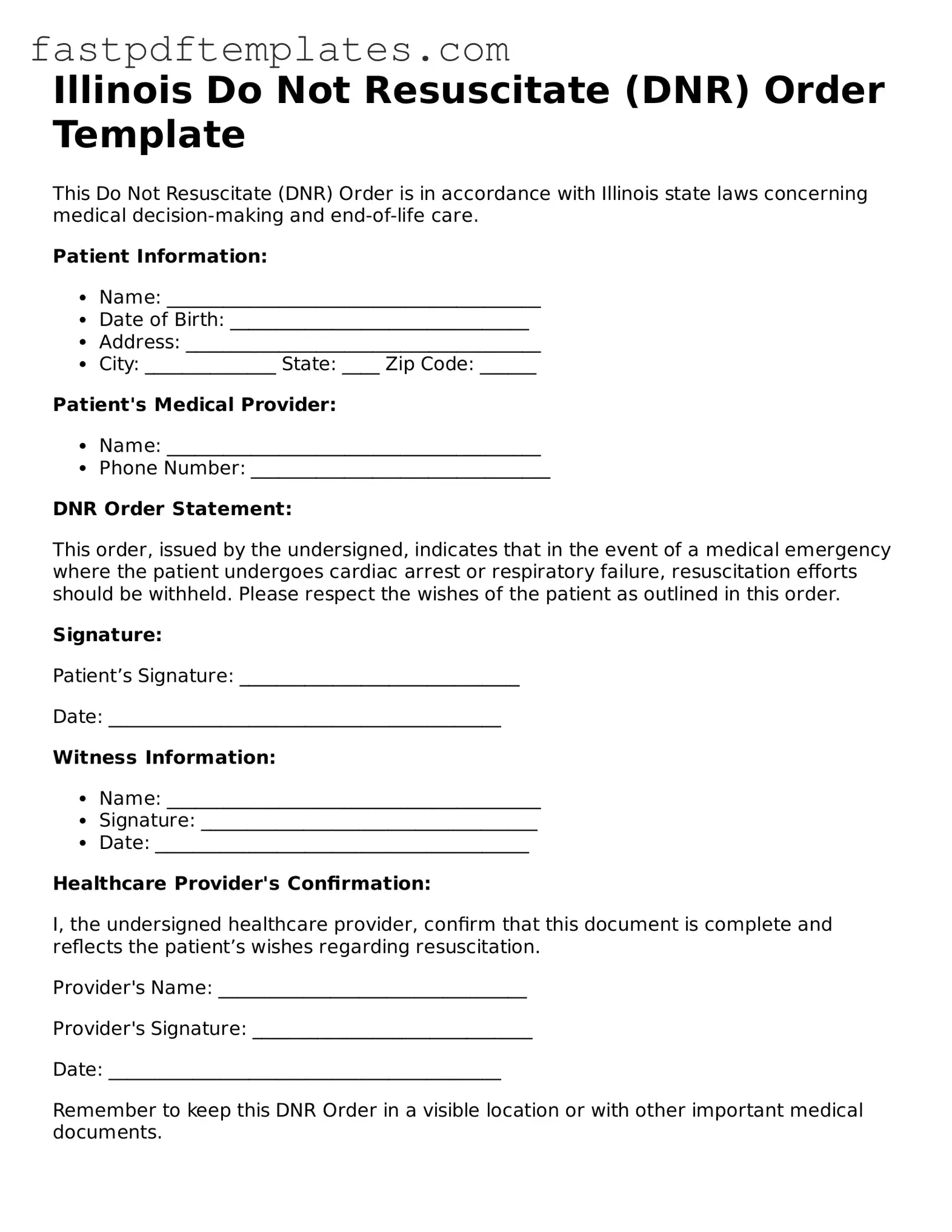Illinois Do Not Resuscitate (DNR) Order Template
This Do Not Resuscitate (DNR) Order is in accordance with Illinois state laws concerning medical decision-making and end-of-life care.
Patient Information:
- Name: ________________________________________
- Date of Birth: ________________________________
- Address: ______________________________________
- City: ______________ State: ____ Zip Code: ______
Patient's Medical Provider:
- Name: ________________________________________
- Phone Number: ________________________________
DNR Order Statement:
This order, issued by the undersigned, indicates that in the event of a medical emergency where the patient undergoes cardiac arrest or respiratory failure, resuscitation efforts should be withheld. Please respect the wishes of the patient as outlined in this order.
Signature:
Patient’s Signature: ______________________________
Date: __________________________________________
Witness Information:
- Name: ________________________________________
- Signature: ____________________________________
- Date: ________________________________________
Healthcare Provider's Confirmation:
I, the undersigned healthcare provider, confirm that this document is complete and reflects the patient’s wishes regarding resuscitation.
Provider's Name: _________________________________
Provider's Signature: ______________________________
Date: __________________________________________
Remember to keep this DNR Order in a visible location or with other important medical documents.
